We are interested in the research of materials showing effects such as spin triplet superconductivity, unconventional superconductivity, ruthenium oxides that exhibit quantum critical phenomena, iron arsenic superconductors, uranium compounds, and organic superconductivity.
For some of these substances, high-purity samples are grown at temperatures up to 2500 Kelvin using an infrared intensive heating furnace. We also conduct structural analysis and evaluation of crystals using X-rays. By sending these samples to domestic and overseas research groups, we are actively engaged in joint research.
Interesting phenomena such as superconductivity can only be observed at low temperatures. We are investigating the electrical, magnetic, and thermal properties using means such as electrical resistance, magnetic susceptibility, specific heat, and nuclear magnetic resonance (NMR) by cooling to a minimum temperature of 20 millikelvin (0.02 Kelvin). In addition, it is possible to gain a deeper understanding of interesting physical properties by actively using a steady magnetic field up to 18 Tesla at low temperatures.
Superconductivity may only appear when pressure is applied. In recent years, an interesting phenomenon that occurs by suppressing an ordered phase by pressure has been studied. In our laboratory, it is possible to measure these substances at low temperatures by applying a hydrostatic pressure up to about 10 GPa using a pressure cell. NMR and electrical resistance measurements are performed in this pressure environment.
In this way, we maximize the environment from sample preparation to measurement, covering a wide range of temperatures from 0.02-2500 Kelvin (5 orders of magnitude), magnetic fields 1-180000 Gauss (6 orders of magnitude), and sometimes even pressures of 10 GPa. Furthermore, by actively developing new equipment, we are striving every day to elucidate various interesting phenomena.
Sample synthesis equipment

Super cantal furnace. Maximum temperature 1600 degrees. 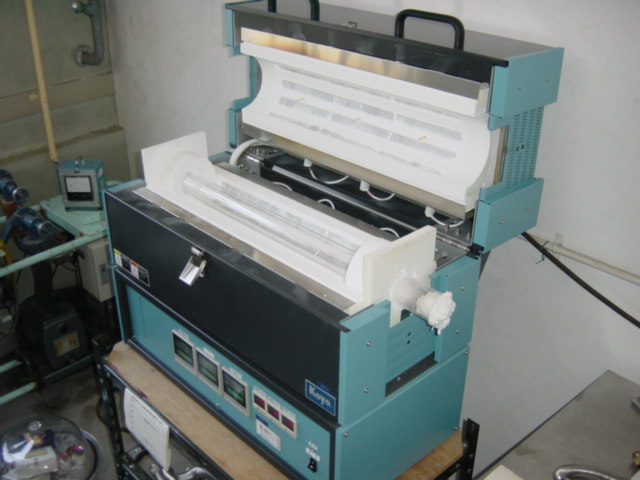
Muffle furnace. Maximum temperature is around 1050 degrees. This is the most popular furnace in the laboratory because it is a box-type, highly versatile, and can be programmed with a process program.
Box furnace
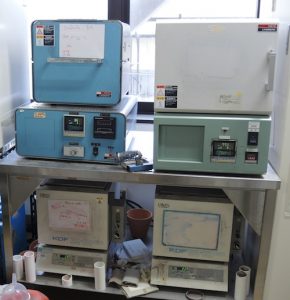
Above is the super cantal furnace. Maximum temperature 1600 degrees.
Below is the muffle furnace. Maximum temperature is around 1050 degrees.
This is the most popular furnace in the laboratory because it is a box-type, highly versatile, and can be programmed with a process program.
X-ray diffractometer
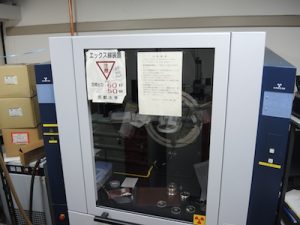
X-ray diffractometer. Useful to evaluate the crystallinity of the synthesised materials.
Three-zone tube furnace
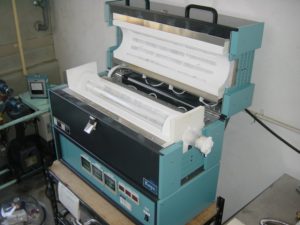
A horizontal tubular furnace characterized by temperature control in three regions (maximum 1200 degrees). This furnace is effective for single crystal growth by chemical transport method.
Isotope furnace
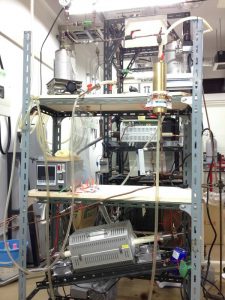
Furnace used for sample isotope replacement. The replacement is performed by circulating isotope gas in the furnace.
Scanning electron microscope (SEM) and energy dispersive X-ray analyzer (EDX)
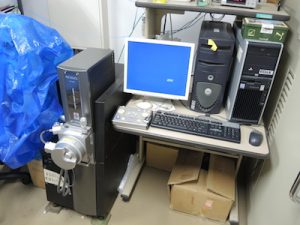
SEM: A microscope that obtains information by scanning a sample with an electron beam.
EDX: By analyzing the X-rays emitted when irradiated with electrons, it is possible to determine what elements are contained in the sample.
Die bonder
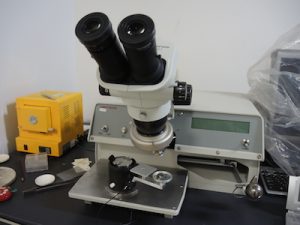
Fine elements such as electrical contacts can be created with this micromanipulator attached to a microscope.
Arc furnace

Used when making alloy samples. It can also be used for metal welding.
Infrared central heating furnace
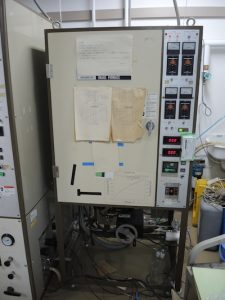
A furnace that can grow single crystals. It is mainly used for growing high-purity single crystals of ruthenium oxide.
Laue X-ray diffractometer
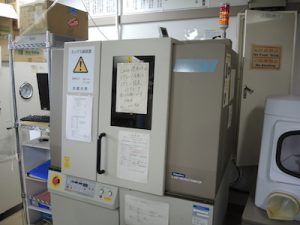
Used mainly for orientation analysis of samples.
Low temperature / magnetic field measuring devices
3He refrigerator (Heliox)
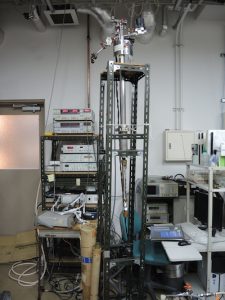
Refrigerator using 3He (Helium 3). Can reach temperatures down to 0.3 K.
3-axis vector magnet
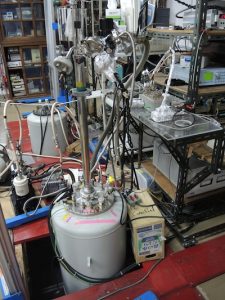
It consists of three superconducting magnets orthogonal to each other that can reach 1 T, 0.2 T, and 0.2 T, respectively. The direction of the magnetic field can be manipulated freely.
Dilution refrigerator (Cryoconcept)
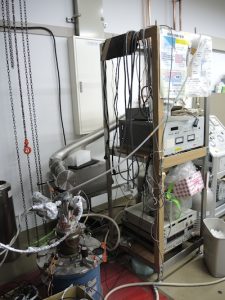
There is a refrigerator inside the 11 Tesla magnet (blue cylinder on the left). This system can measure at temperature as low as 16 mK and magnetic fields as high as 11 T.
Vector superconducting magnet + dilution refrigerator (Oxford)
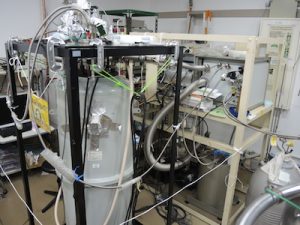
Vector magnet and dilution refrigerator. The magnetic field direction can be freely controlled. Can reach temperatures up to 0.05 K and magnetic fields up to 5 T.
Specific heat and magnetoresistance measuring device (PPMS)
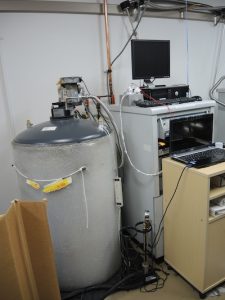
Measurement up to 0.3 K temperature and 7 T magnetic field.
Magnetization measuring system (MPMS)
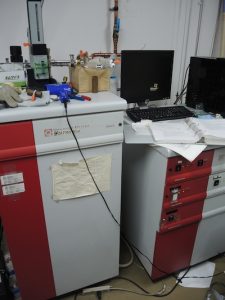
Magnetization measuring machine using SQUID. It can reach temperatures from 1.8 K to 800 K and a magnetic field of 7 T.
Dielectric constant probe (C-dipper)

A probe that can measure the dielectric constant at low temperatures simply by inserting it into a helium vessel.
Pressure cells
Piston cylinder cell
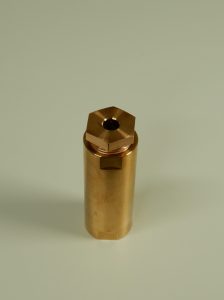
A pressure cell characterized by a large sample space (> 100 mm 3 ). The ultimate pressure is about 2.5 GPa. This cell can be cooled to about 80 mK in combination with a dilution refrigerator for NMR.
Indenter cell
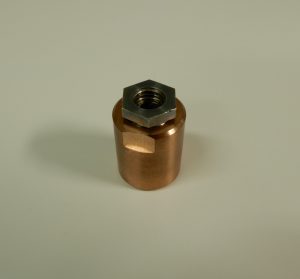
A pressure cell that is small and has a relatively high ultimate pressure. Pressure up to about 4.5 GPa can be applied.
NMR / NQR measurement system
Glass dewar

A small dewar dedicated to nuclear quadrupole resonance (NQR) that does not require a magnetic field and is made of glass. Equipped with a N2 jacket. Helium usage is low and can be used easily. Can reach 1.3 K.
5 Tesla transverse magnetic field split magnet
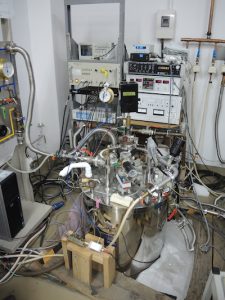
By rotating the probe, the magnetic field angle dependence of the sample can be examined. Equipped with a N2 jacket, heat insulation is very good, and for normal use, He transfer is not required for 10 days.
NQR Dewar
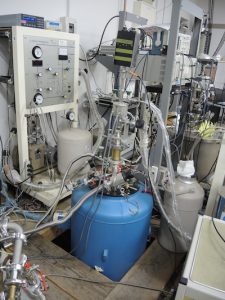
Dewar for NQR without magnet.
8 Tesla transverse magnetic split magnet
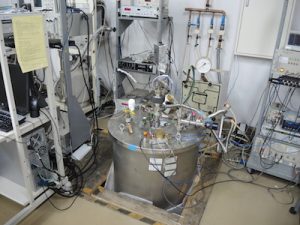
By rotating the probe, the magnetic field angular dependence of the sample can be examined. An unusual transverse magnetic field magnet can output up to 8 T while maintaining the magnetic field uniformity required for NMR measurement. Equipped with a N2 jacket.
New 15 Tesla magnet
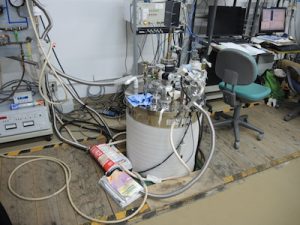
Strong magnetic field up to 15 T and high magnetic field uniformity of 10 ppm/cm3 . Equipped with a N2 jacket, He transfer is not required for a week for normal use.
Oxford 15/17 Tesla Magnet
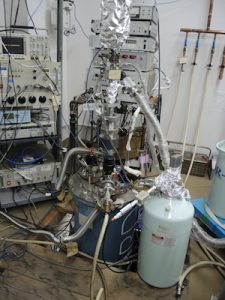
(Used until August 2018) A strong magnetic field of 15 T is obtained for normal use and a maximum of 17 T is obtained for use with a pump.
16 Tesla magnet
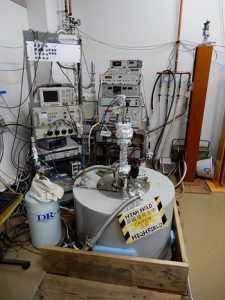
(Operation from September 2018) A large magnet with high magnetic field uniformity that can obtain a strong magnetic field of up to 16 T. Helium is transferred about 90 L at a frequency of 3-4 days.
Small dilution refrigerator for NMR
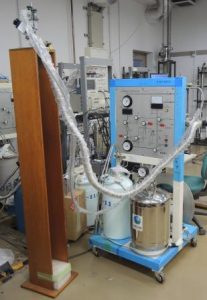
Compact dilution refrigerator for NMR / NQR measurement. It is possible to measure by inserting into the above 5 dewars excluding glass dewar. The lowest reachable temperature reached is about 60 mK, thanks to a 3He- 4He mixture. There are a total of three dilution refrigerators for NMR / NQR, one of which allows measurements with a pressure cell.
![]()